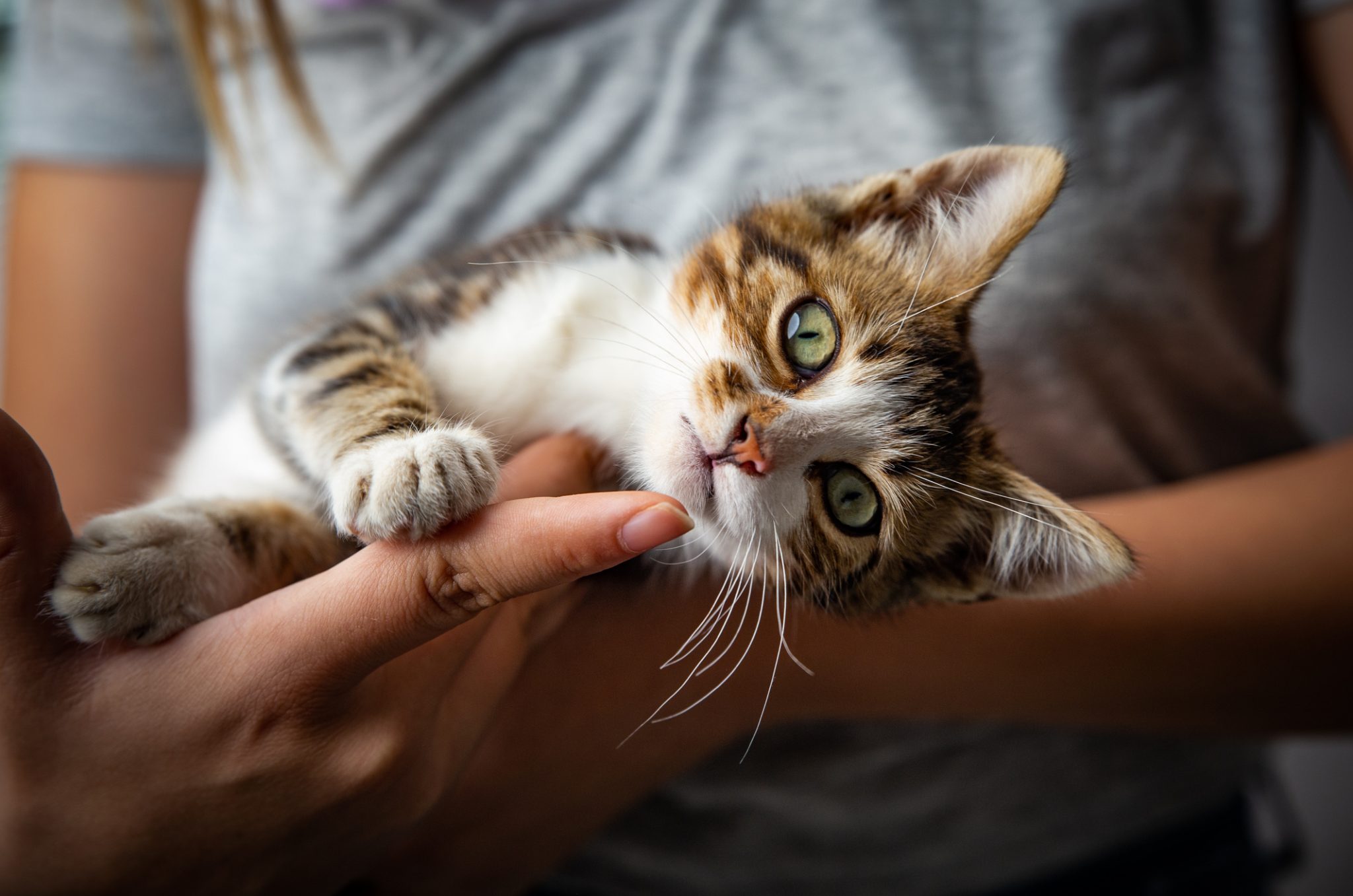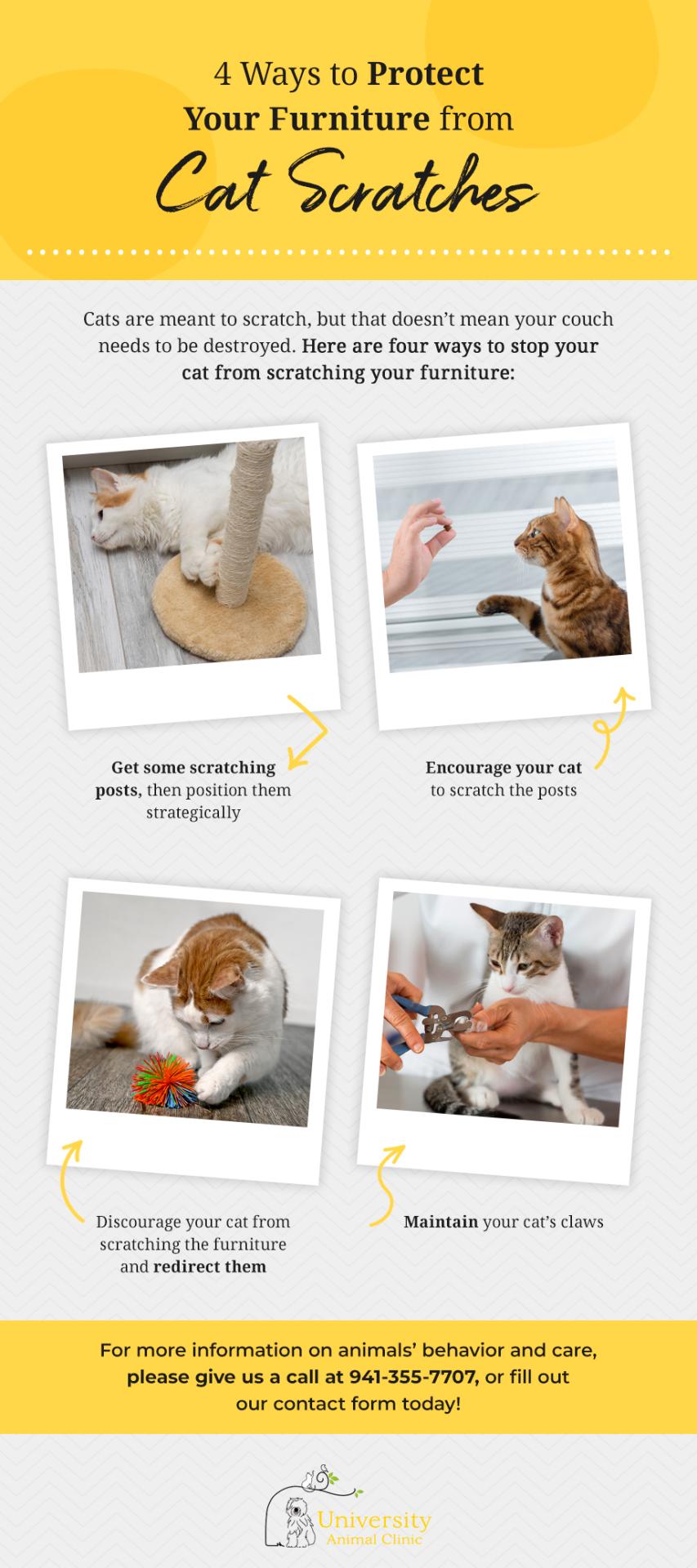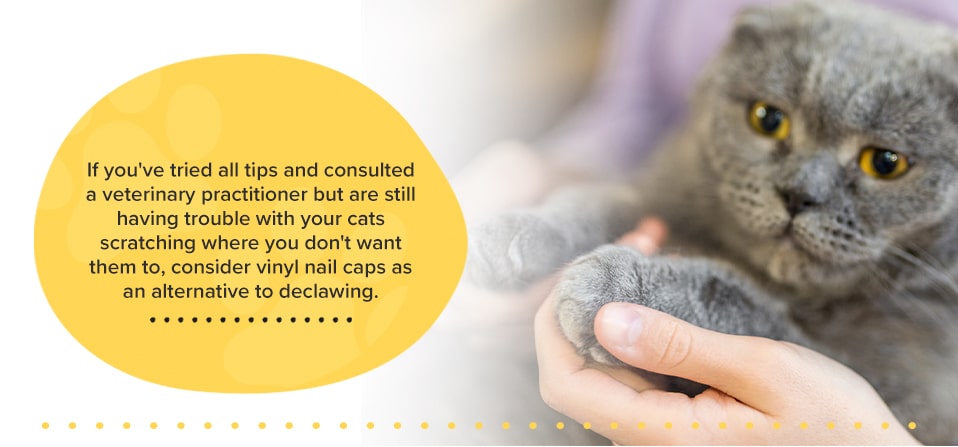How to Train Cats Not to Scratch Furniture
The best way to train your cat not to scratch furniture is to provide them with a better scratching surface, like a scratching post, and placing it in a strategic position near your furniture so your cat will go to the post first to satisfy their scratching urges. You should reward your kitty when they respect the dedicated scratching zones with affirmations and treats so they associate their scratching posts with positive feedback. This ensures you're using positive reinforcement to alter your cat's behavior. If your cat still attempts to scratch your furniture, try redirecting their attention by making a loud noise, like a clap, and then using a toy or treat to show them the way to their scratching post. You should also ensure your cat's nails are trimmed a couple of times a month to minimize the damage to your furniture while you train your cat to stop scratching it.

You love your cat, from their toe beans to their biscuit-making skills and everything in between. But those cute paws aren’t so adorable when they add another row of claw marks to your favorite chair. There’s good news, though — you can stop your cat from scratching furniture and direct them to authorized scratching zones.
Why Is My Cat Scratching Furniture?
Cats scratch furniture and surfaces to stretch their bodies, mark their territories, keep their claws healthy and relieve stress and tension. If they don’t have a designated scratching area, they will use whatever they can find, including your furniture.
How Do I Stop My Cat Scratching The Furniture?

You can train your cat to scratch only in the areas you want to — yes, cats can be trained! You can try:
- Having scratching posts available: Get sturdy scratching posts and position them to protect your furniture. A post will keep your kitty occupied and let them satisfy their scratching urges.
- Using positive reinforcement: Encourage your cats to use designated scratch zones with treats and affirmation.
- Redirecting their attention: Discourage your cats from scratching your couch by diverting their focus. Make a loud noise to grab their attention and then use a toy or treat to direct them to the scratching post.
Keep your cat’s claws trimmed, too. You can ask a groomer or veterinary assistant to trim their claws regularly or have them show you how to do it correctly on your own.

What Is A Cat Declawing Alternative?
If you’ve tried all tips and consulted a veterinary practitioner but are still having trouble with your cats scratching where you don’t want them to, consider vinyl nail caps as an alternative to declawing.
Declawing is not just trimming your cat’s nails. It’s essentially a toe amputation. The Humane Society of the United States opposes cat declawing because it can cause physical pain, infection, nerve damage, aggressive behavior, lameness and refusal to use the litter box.
Contact Us For More Information On Cat Scratching
University Animal Clinic is an accredited AAHA hospital passionate about preventative care. Your four-legged friends are part of the family, and our friendly and knowledgeable team treats them with all the love and respect they deserve.
If you need more information about cat scratching or behavior, please contact us online or call (941) 253-5218.
